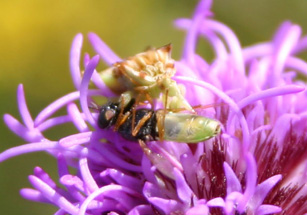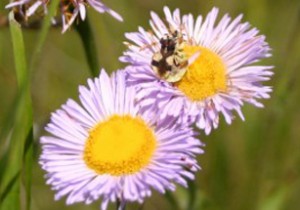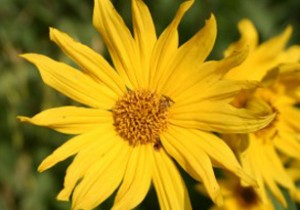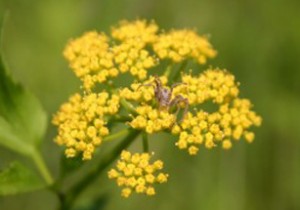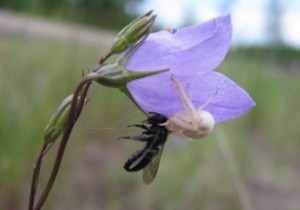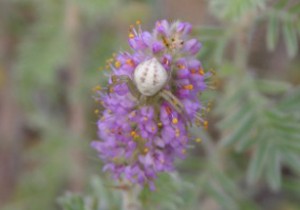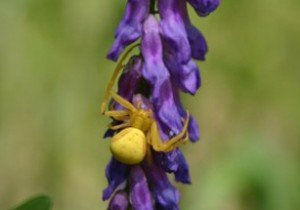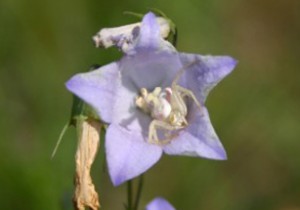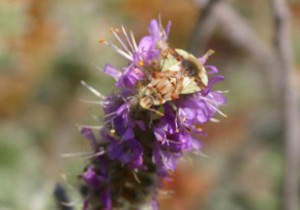Since so many insects visit flowers, some insect predators have evolved to take advantage of this abundant food supply. Insects like ambush bugs (Phymata) and arachnids like goldenrod spiders (Misumena) will hide on flowers (commonly goldenrods) and wait for pollinators to show up.
Once an unsuspecting insect lands on the flower, the predator quickly grabs the prey. At this point, things get a little gruesome. The insects pierce the preys’ body with their mouthparts and inject venom that both paralyzes and partially digests it. When the prey is immobilized, the predator can suck out the liquefied remains of the insect at its leisure, leaving only an empty exoskeleton behind. Although ambush bugs are small (less than 1-cm) they capture insects several times their size, typically focusing their attacks on flower flies, wasps, bees and even butterflies.
Ambush bugs and goldenrod spiders can change their colour, so that they blend in better with the flowers they inhabit. On Canada Goldenrod, Rigid Goldenrod and Black-eyed Susan, they are typically yellow while those on Upland White Goldenrod and Common Yarrow are more whitish. Ambush bugs living on purplish flowers, like Meadow Blazingstar, Purple Coneflower, Hairy Prairie Clover and Lindley’s Aster, often have a violet tinge to them. This camouflage colouring is potentially advantageous, since predators possessing strongly contrasting colours can be more easily detected.





